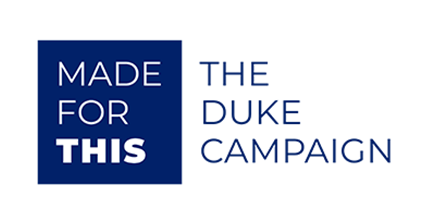Research
My ultimate goal is to understand the the genomic changes that underlie vertebrate evolution and human disease. I use both computational genomics and experimental genetics to create a cycle where computational screens define promising candidates and follow-up wet-lab experiments provide feedback to improve the computational screens. By combining these approaches, I have: 1) shown that 20% of regulatory elements in the human genome arise from transposon insertions, 2) discovered three macroevolutionary epochs of gene regulatory innovation throghout vertebrate evolution, and 3) created statistical models to identify novel gene regulatory elements, including examples that relate to evolved human traits and increased disease risk. I will build on this previous work to systematically uncover how structural variation relates to evolution and disease risk through three major research directions:
1) Identifying species-specific structural variants in stickleback fish and humans, as well as understanding their function in development and evolution
2) Discovering novel structural variants segregating in humans and systematically analyzing their relationship to disease
3) Understanding the molecular basis of iconic traits that have arisen on branches of the vertebrate tree of life
Projects coming with me
1) New gene expression patterns in humans and their resulting phenotypic traits
2) Strongly selected deletions during stickleback evolution
Biography
Craig has an undergraduate degree in Computer Science from Cornell University’s College of Engineering where he developed interests in both machine learning and genetics. For his graduate work he joined David Haussler’s lab at UC Santa Cruz to computationally analyze the first vertebrate genomes. During his graduate work, Craig analyzed the types and times of mutations that created gene regulatory elements in vertebrate genomes over the last 500 million years. Craig did his postdoctoral research with David Kingsley at Stanford University, which has given him the ability to mix computational genomics and experimental genetics. During his postdoc Craig has studied lineage-specific adaptations in stickleback fish and humans.
Lab Members
Publications
Lowe*, N. Sanchez-Luege*, T. R. Howes, S. D. Brady, R. R. Richardson, F. C. Jones, M. A. Bell, D. M. Kingsley. Detecting Copy Number Variation Associated With Phenotypic Classes. Genome Res., 2016. In revision.
Lowe, J. A. Clarke, A. J. Baker, D. Haussler, S. V. Edwards. Feather development genes and associated regulatory innovation predate the origin of Dinosauria. Mol Biol Evol. 2015 Jan;32(1):23-8.
Lowe and D. Haussler. 29 mammalian genomes reveal novel exaptations of mobile elements for likely regulatory functions in the human genome. PLoS ONE, 7(8):e43128, 2012. 29 mammals sequencing and analysis consortium.
(co-2nd author)A high-resolution map of human evolutionary constraint using 29 mammals. Nature, 478(7370):476–482, Oct 2011.
Anolis genome sequencing consortium. (8th author) The genome of the green anole lizard and a comparative analysis with birds and mammals. Nature, 477(7366):587–591, Sep 2011.
Lowe, M. Kellis, A. Siepel, B. J. Raney, M. Clamp, S. R. Salama, D. M. Kingsley, Lindblad-Toh, and D. Haussler. Three periods of regulatory innovation during vertebrate evolution. Science, 333:1019–1024, Aug 2011.
McLean, D. Bristor, M. Hiller, S. L. Clarke, B. T. Schaar, C. B. Lowe, A. M. Wenger, and G. Bejerano. GREAT improves functional interpretation of cis-regulatory regions. Nat. Biotechnol., 28:495–501, May 2010.
Lowe, G. Bejerano, S. R. Salama, and D. Haussler. Endangered species hold clues to human evolution. Hered., 101:437–447, 2010.
Zhu, J. Z. Sanborn, M. Diekhans, C. B. Lowe, T. H. Pringle, and D. Haussler. Comparative genomics search for losses of long-established genes on the human lineage. PLoS Comput. Biol., 3:e247, Dec 2007.
Wang, J. Zeng, C. B. Lowe, R. G. Sellers, S. R. Salama, M. Yang, S. M. Burgess, R. K. Brachmann, and D. Haussler.
Species-specific endogenous retroviruses shape the transcriptional network of the human tumor suppressor protein p53. Proc. Natl. Acad. Sci. U.S.A., 104:18613–18618, Nov 2007.
Lowe, G. Bejerano, and D. Haussler. Thousands of human mobile element fragments undergo strong purifying selection near developmental genes.
Proc. Natl. Acad. Sci. U.S.A., 104:8005–8010, May 2007. Bejerano, C. B. Lowe, N. Ahituv, B. King, A. Siepel, S. R. Salama, E. M. Rubin, W. J. Kent, and D. Haussler.
A distal enhancer and an ultraconserved exon are derived from a novel retroposon. Nature, 441:87–90, May 2006.
Make a Gift
At Duke University School of Medicine, donors play a vital role in fostering innovation, enhancing patient care, and training the next generation of health care leaders. Your contributions not only sustain and elevate existing programs but also pave the way for groundbreaking discoveries.

You can support the work of the Department of Molecular Genetics and Microbiology by making a gift to the Craig Lowe Laboratory.




